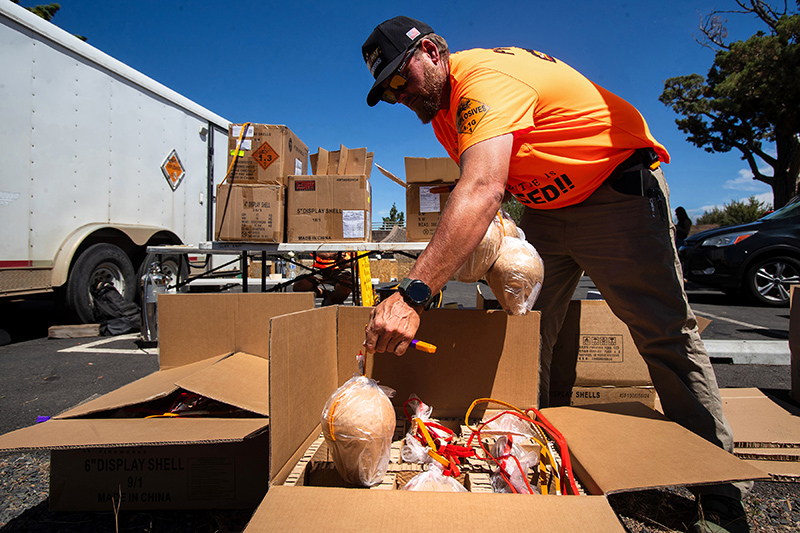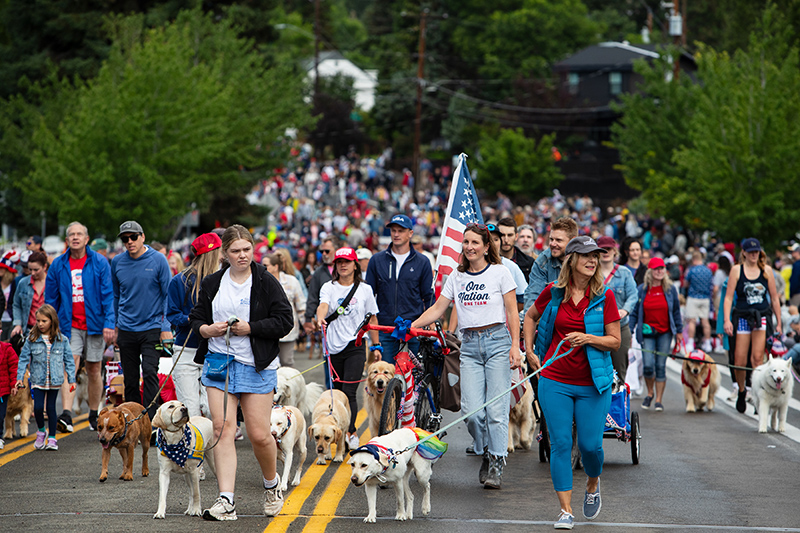Finding fatbike fun
Published 12:00 am Thursday, February 22, 2018

- Siobhan McNulty, right, and Jay Marsh ride fatbikes through the Phil’s Trail complex on Tuesday.(Joe Kline/Bulletin photo)
For the past three years, Gary Meyer has groomed snowy singletrack trails for fatbikers at Wanoga Sno-park west of Bend.
But due to meager snowfall he has not had much of an opportunity to do so this winter.
Still, fatbikers are finding places to ride during this relatively dry winter. In the right conditions, they can ride the regular mountain bike trails just west of Bend, and many have been doing so after a few inches of snow fell earlier this week.
“People go out and it’s kind of self-groomed,” says Meyer, winter trails steward for the Central Oregon Trail Alliance. “When we get a dump of snow, the first person goes out and rides as far as they feel like to break trail, then turns around and doubles back. As several people ride, pretty soon you get a loop in, an everybody’s riding that loop.”
Fatbikes typically perform better on packed-down snow than on several inches of fresh powder. The bikes’ wider tires (typically 3.8 inches wide versus 2.25 inches for standard mountain bike tires) allow for better traction in snow or sand. Central Oregonians primarily use them for riding in the snow. A recent trend among fatbikes has been even wider tires, up to 5 inches wide, for even better traction in deep snow.
Tire pressure can be as low as 5 or 6 pounds per square inch on fatbikes — mountain bikes are usually between 30 and 50 psi — to provide even more traction on challenging terrain.
Fatbikes are capable of ripping through about 2 to 3 inches of fresh snow. Anything deeper than that becomes extremely difficult, Meyer says. Groomed trails give fatbike riders a firmer surface to avoid sinking into the snow.
Fatbikes are also allowed on snowshoe trails and groomed snowmobile trails in Central Oregon, but they are prohibited at nordic ski areas such as Virginia Meissner Sno-park and the Mt. Bachelor Nordic Center.
Snowshoe loops at Swampy Lakes Sno-park and near Todd Lake are popular among fatbikers. Sometimes the cyclists themselves will snowshoe to pack the trails down for fatbiking.
“They’ll go in and pack in a snowshoe loop, and then come back in the next day and ride the loop,” Meyer said. “So it’s been real popular this year riding the snowshoe loops out to Todd Lake.”
Fatbikers have been riding in the Phil’s Trail network this week as a welcome dump of several inches of show has blanketed the area. Unlike regular mountain bikes, fatbikes are capable of rolling through several inches of snow without sinking into it.
“If it’s 3 inches of wet, heavy snow, it’s going to be difficult to ride any bike through,” Meyer explains. “But once you start to get that 3 inches compressed a bit, then the fatbike excels and you can float on top of the snow. A skinnier tire would continue to dig a rut in it.”
According to Meyer, fatbikers have been riding trails from Bend up to Lower Whoops and Storm King, about 6 to 8 miles west of town.
Robert Rekward, an avid fatbiker/mountain biker and co-founder of the website Bendtrails.org, says he has enjoyed fatbiking at Horse Butte, southeast of Bend, and along the C.O.D. Trail west of Bend. Other trails popular among fatbikers include Ben’s and Kent’s trails in the Phil’s area, as well as the Tumalo Creek Trail.
These trails are generally flat, which is ideal, as fatbikes do not climb particularly well on snow, according to Rekward.
Fatbikers often report trail conditions on Bendtrails.org and on the Central Oregon Fatbikes Facebook page.
“Right after the snow hits is a great time to get out there on your fatbike,” Rekward says. “What we found is that if it snows tonight (for example), then tomorrow everybody reports where they were riding. It’s been a pretty active winter, actually, because of this strange lack of snow we’ve had. A lot of our rides we’ve done we’ll start out in snow and end up in dirt at the bottom, because it’s been so thin this year.”
Fatbikers are always looking for updates, as snow conditions are constantly changing. But they also want to avoid muddy trails, which has been an issue this winter, as freeze-thaw transition periods have been frequent. Riding in these muddy conditions can create unwelcome ruts that dry out and stay etched into the trail well into summer.
With their wider tires, fatbikes do not create ruts as easily as regular mountain bikes, but Meyer advises cyclists to stay off muddy trails no matter what type of bike they ride.
“The problem is our soil is fragile,” Meyer says. “So once you create a rut, it dries out, and then it becomes a hazard. Then the edges of the rut break down and create a dust bowl. In real muddy conditions (on a fatbike) you’ll just create a wider rut. It’s been a big problem this year because we’ve had so many thaw periods.”
Rekward says that conditions can change rather quickly from snowy trails to a muddy mess.
“So everybody’s trying to stay on the right side of that line, if you will,” Rekward explains. “We get tons of reports (on Bendtrails.org).”
Meyer says he needs about 2 feet of snow to begin grooming the singletrack fatbike trails at Wanoga. The past three years he has groomed a 6-mile loop and a 3-mile loop from the sno-park with a rolling groomer pulled by a snowmobile. Via a permit from the Deschutes National Forest, he is now allowed to groom the trails each winter from Jan. 1 until there is not enough snow to groom.
The problem is, this winter he has not really had a chance to even start.
“It’s the end of February, so if we do get enough snow and it stays cold, we may have a couple of weeks of groomed trails,” Meyer says. “March, it warms up pretty quick usually. I’m going to stay optimistic, but so far this year has just been killing me.”
— Reporter: 541-383-0318,
mmorical@bendbulletin.com








